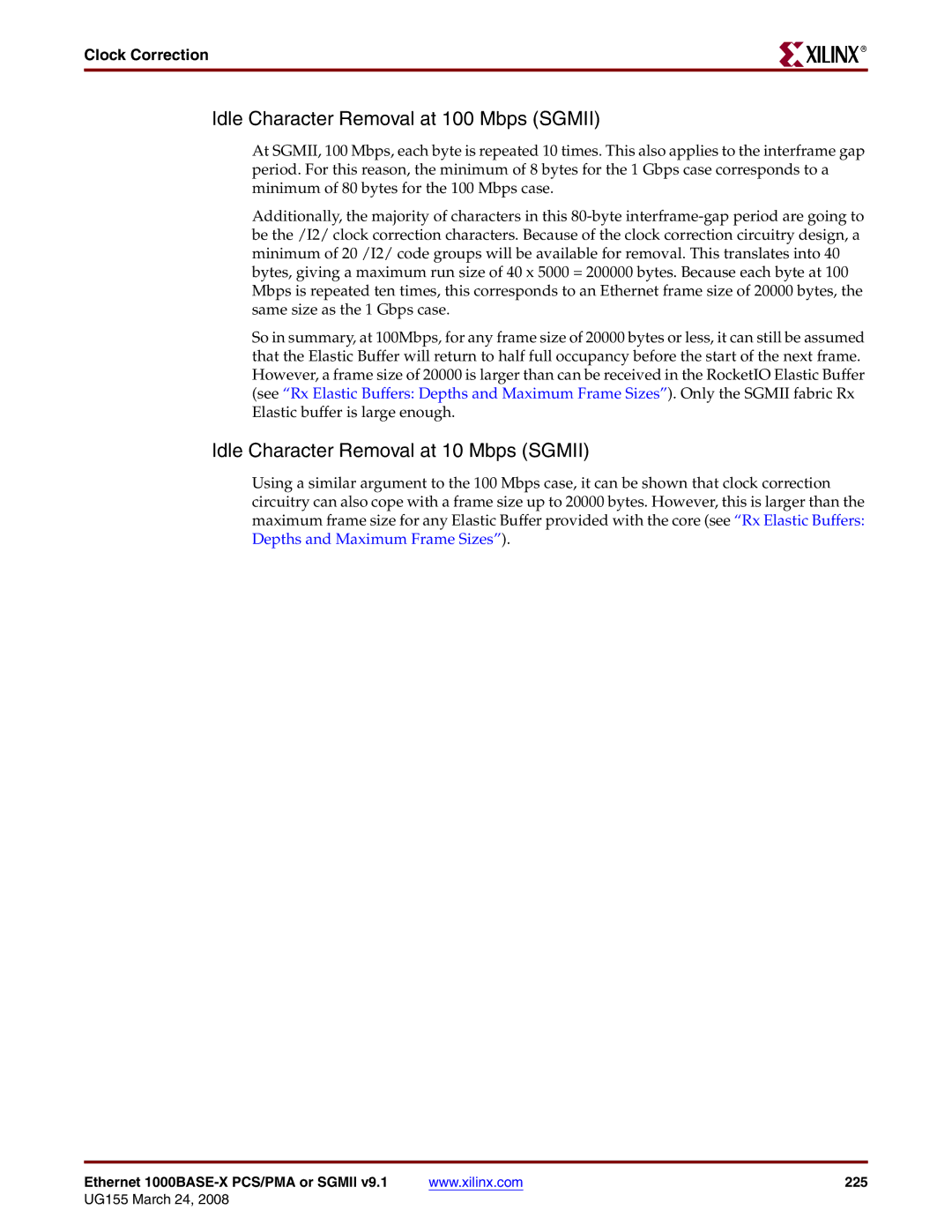
Clock Correction
R
Idle Character Removal at 100 Mbps (SGMII)
At SGMII, 100 Mbps, each byte is repeated 10 times. This also applies to the interframe gap period. For this reason, the minimum of 8 bytes for the 1 Gbps case corresponds to a minimum of 80 bytes for the 100 Mbps case.
Additionally, the majority of characters in this
So in summary, at 100Mbps, for any frame size of 20000 bytes or less, it can still be assumed that the Elastic Buffer will return to half full occupancy before the start of the next frame. However, a frame size of 20000 is larger than can be received in the RocketIO Elastic Buffer (see “Rx Elastic Buffers: Depths and Maximum Frame Sizes”). Only the SGMII fabric Rx Elastic buffer is large enough.
Idle Character Removal at 10 Mbps (SGMII)
Using a similar argument to the 100 Mbps case, it can be shown that clock correction circuitry can also cope with a frame size up to 20000 bytes. However, this is larger than the maximum frame size for any Elastic Buffer provided with the core (see “Rx Elastic Buffers: Depths and Maximum Frame Sizes”).
Ethernet | www.xilinx.com | 225 |
